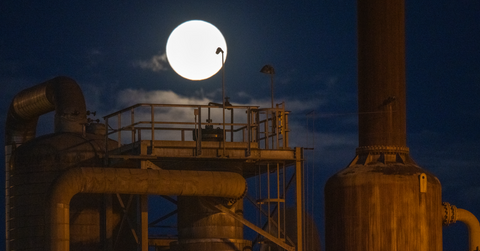Crypto Miners Are Buying Power Plants, But Not Why You Might Think
Currently, 20th century power plants are gaining newfound applications thanks to cryptocurrency miners. Why are crypto miners buying power plants?
July 28 2021, Published 12:17 p.m. ET
The environmental impact of cryptocurrency has been a hot topic ever since Elon Musk walked back his statement that Tesla would accept Bitcoin as payment. Consensus mechanisms for cryptocurrency are notoriously energy guzzling—a model that doesn't align with Tesla's sustainability goals. Now, crypto miners are looking to up the ante. Some crypto miners have purchased old power plants as a home base for their operations.
What crypto miners are actually purchasing power plants in full, and why are they doing it? Here's what we know.
Crypto miners want server space, and they're buying old power plants for the infrastructure.
No, crypto miners aren't purchasing operational power plants to cater to their high energy usage. Instead, they're buying now-defunct power plants (and other old facilities) for land and property.
These miners are seeking space to set up servers. More space for servers means more opportunity to mine Bitcoin and other cryptocurrencies—which, of course, means more money in miners' hands.
Miners are targeting power plant infrastructure in particular because of its naturally industrial setup. Experts say that the way power plants were built actually gives good bones to modern cryptocurrency mining farms. Specifically, a lot of old and out-of-use power plants were designed to get hot air out and bring cool air in, which is exactly what a building full of servers requires.
Who's benefiting from this power plant repurposing?
Mainly, crypto miners are benefiting from this transition to existing property reuse. The landowners and realtors are also benefiting as their properties—many of which have sat vacant for years—get sold off for a new life.
One fusion power facility operates in an old power plant.
A startup blockchain service provider bought an old power plant in the Finger Lakes region of New York to help mine cryptocurrency. The crypto company converted the building's energy from coal to natural gas in 2017.
They aren't the only company doing this. Other crypto firms have bought out power plants in Massena, N.Y. and Hardin, Mont.
In reality, not all old power plants have the infrastructure necessary for a crypto mining facility. However, many do and companies will continue to target that real estate in the near future.
The catch 22: More mining means more energy use
Of course, repurposing old real estate doesn't automatically make the crypto industry environmentally friendly. In fact, it's quite the opposite. More mining facilities means more energy usage, and crypto's energy use is already quite high.
Not only is there the global environmental concern of cryptocurrency to think about, but there are also various local concerns. Power plants tend to exist in rural locations. As crypto firms take over these rural facilities, they're putting new pressure on local communities that didn't ask for the change and might not be up for the challenge. It could have a negative impact on an entire region's sustainability goals, even if the area is keeping its carbon footprint down.
This is exactly why hundreds of people showed up at the regional headquarters of the New York State Department of Environmental Conservation in June when an old hydropower plant turned into a crypto mining locale.
Ultimately, crypto miners are giving new life to out-of-use power plants, but do the benefits outweigh the costs to global and local communities alike?


